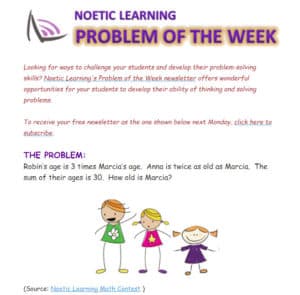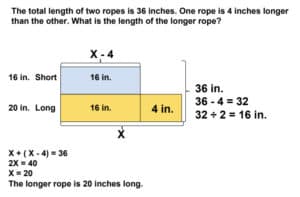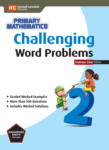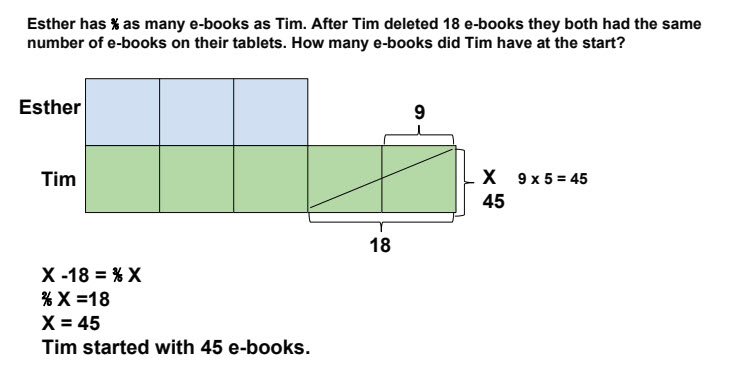Word Problem Wednesday was such a hit, we’re going to continue throughout the year with one problem a month.
Singapore Math, Inc. will be releasing a new series April 25 at the National Council of Teachers of Mathematics Annual Conference. This problem comes from a chapter on two-step word problems from 3A
Mei and Dion together made 11 turtles. Mei made 3 more turtles than Dion.
How many turtles did Mei make?
Submit your solutions and we’ll post all interesting solutions.
The last problem was taken from Noetic Learning’s problem of the week Sign up to receive their weekly problems.
Robin’s age is 3 times Marcia’s age. Anna is twice as old as Marcia. The sum of their ages is 30. How old is Marcia?
Shirley Davis shared her algebraic bar model solution:
How did you do?

 NCEA 2018 Convention & Expo (April 3 – 5 at the Duke Energy Convention Center in Cincinnati, OH) is the largest private-education association gathering in the nation!
NCEA 2018 Convention & Expo (April 3 – 5 at the Duke Energy Convention Center in Cincinnati, OH) is the largest private-education association gathering in the nation! NCTM Annual Meeting and Exposition 2018 (April 25 – 28 at the Walter E. Washington Convention Center in Washington, D.C.) is the premier math education event of the year!
NCTM Annual Meeting and Exposition 2018 (April 25 – 28 at the Walter E. Washington Convention Center in Washington, D.C.) is the premier math education event of the year!




































